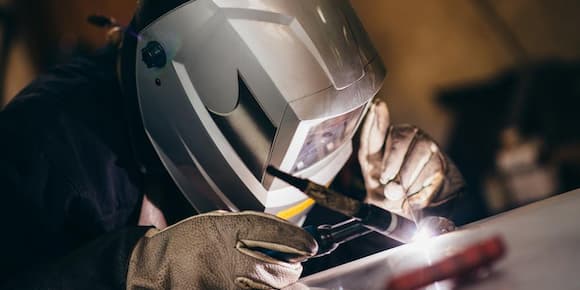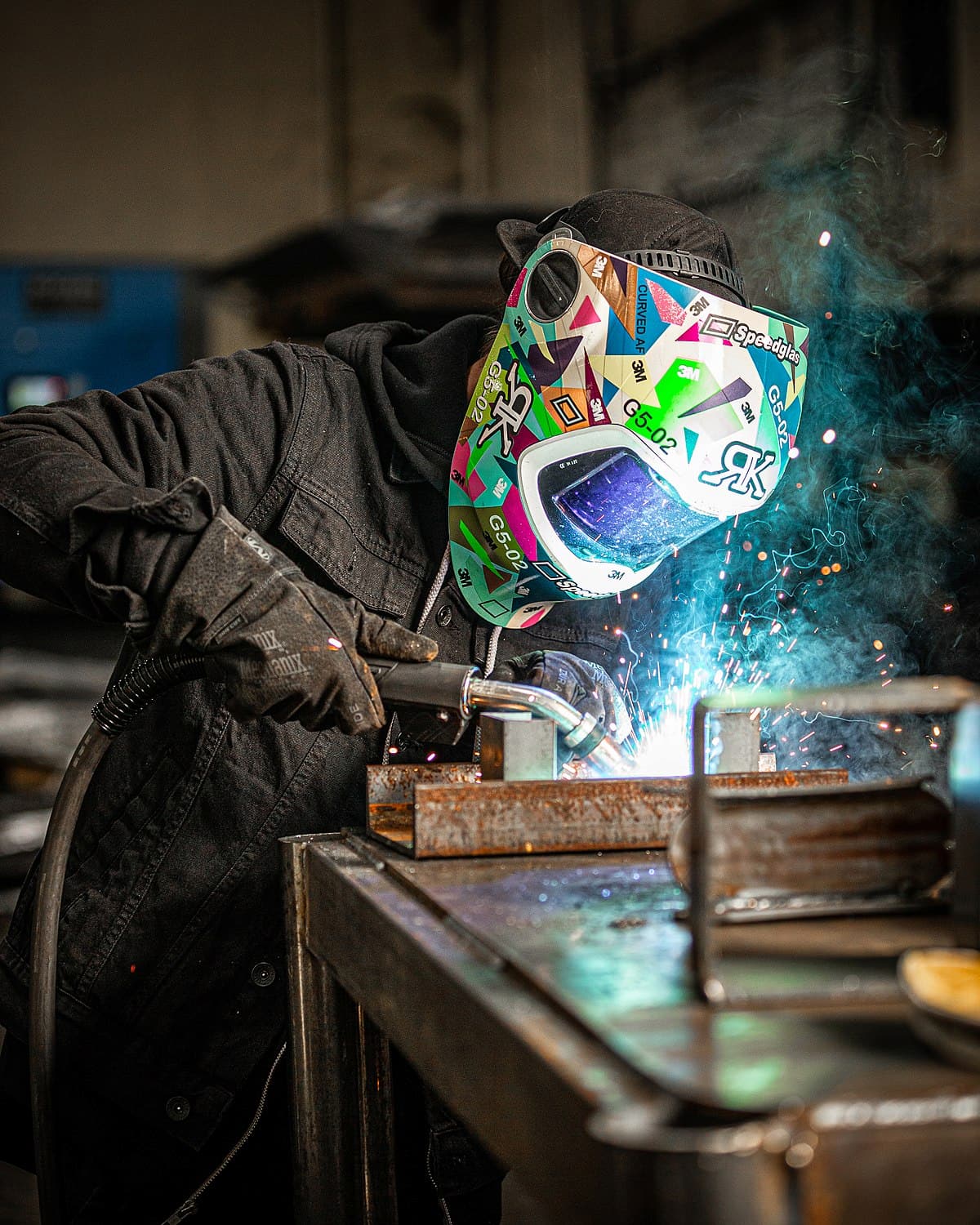Welding is a fabrication process of joining two or more metals together with or without applying pressure, heat and filler metal. There are many different welding processes that can be categorised as two main types of welding – solid-state and fusion welding. Fusion welding requires heat to melt the connecting surfaces of the two parts to form a weld bead or coalescence. Solid state welding, on the other hand, doesn’t require melting, but as its name implies, the joining of the two parts happens in a solid phase.
Fusion welding is arguably the more popular type of welding, and it consists of a few different processes, such as arc welding, gas welding and high-intensity beam welding. Every process where an electric arc is employed is considered arc welding. On the other hand, gas welding involves using oxy acetylene gas welding equipment to provide heat. That being said, the key difference between gas and arc welding is within the heat source. However, the differences in what both welding methods are capable of and the quality of welds they provide can vary greatly.
In arc welding, an electric arc establishes the connection between the electrode and components, so the components need to be highly conductive. Moreover, the components require grounding or need to be connected to a power supply to complete the electrical circuit. Moreover, the flow of electrons from and to the welding surface helps clean the welding zone. This isn’t present in gas welding. In fact, there’s no need for an electrical power supply here. Instead, a cylinder containing oxygen and one containing gaseous fuel are used in every gas welding process.
Gas welding is wider and uses less temperature flame compared to arc welding. This increases weld bead width, but limits heat intensity, lowering welding speed. Let’s go into more detail about the similarities and differences between arc and gas welding.
Similarities

As aforementioned, all gas and arc welding processes are fusion welding processes. Fusion welding is when the saying surfaces of the base metals, plus the filler metal if applied, are melted to coalescence formation. In both arc and gas welding processes, heat is supplied through different means, with no internal heat generation taking place. The filler metal can be also applied externally if necessary. All arc welding processes don’t necessarily deposit filler on the weld bead, and not all of them are carried out in autogenous mode.
Both gas and arc welding can be used for homogenous joining, as well as heterogenous joining after ensuring thermal, metallurgical and chemical compatibility. Moreover, the development of the heat-affected zone and the change of metallurgical properties around the weld bead are inherent to all gas and arc welding processes. However, the width of the heat-affected zone and the degree of metallurgical changes vary from one process to another.
Differences

An electric arc is necessary in arc welding in order to fuse the base metals. On the other hand, oxy acetylene welding equipment is used to make a flame in gas welding. Arc welding is used for electrically conductive metals because an electrode is used to constitute the arc. Gas welding can be used for both conductive and non-conductive metals. Since an electrode is used in arc welding, the parent components need to be connected to a power supply or grounded. The electric power supply is also needed to apply the necessary voltage, current and frequency.
Shielding of the high-temperature arc is also necessary for arc welding. The shield can be provided by an external supply of inert gas or the disintegrated flux coating found on the electrode. On the other hand, there’s no shielding in gas welding. The electric arc has a small cross-section area, reducing the width of the weld beat and the heat-affected zone. Gas flame, in comparison, has a wider cross-section area, resulting in wider weld bead and heat-affected zone.
However, as a result of the small cross-section area, the arc temperature is very high, exceeding 5000 degrees Celsius, melting almost any metal. The flame temperature in gas welding, on the other hand, is only capable of reaching up to 3500 degrees Celsius, so it’s not suitable for joining metals with a high melting point.
The high temperature and narrow arc increase heat density, fusing the base metals much faster. This makes arc welding more economic and productive. The lesser temperature and heat density, on the other hand, makes gas welding more time-consuming. Moreover, higher heat density improves the fluidity of the molten metal. As a result, the molten metal can penetrate deeper into the root gap. As a result, arc welding is generally preferred for joining thicker parts, whereas gas welding is generally preferred for welding thinner plates and sheets of metal.
Arc welding can’t be applied for cutting, cleaning and heating, whereas gas welding can be applied for pre-heating, post-heating, heat treatment, metal cleaning, brazing, soldering and gas cutting.
